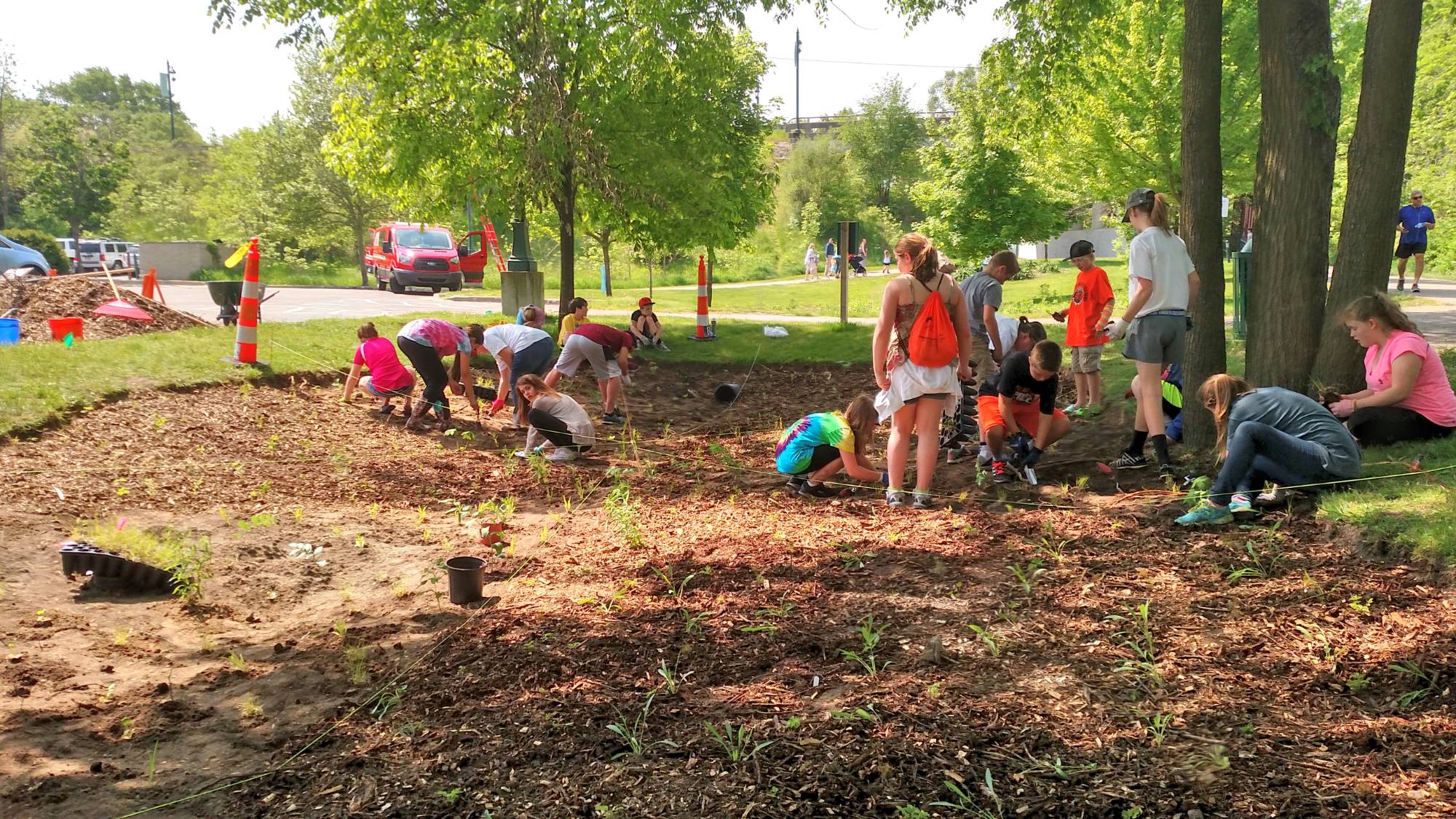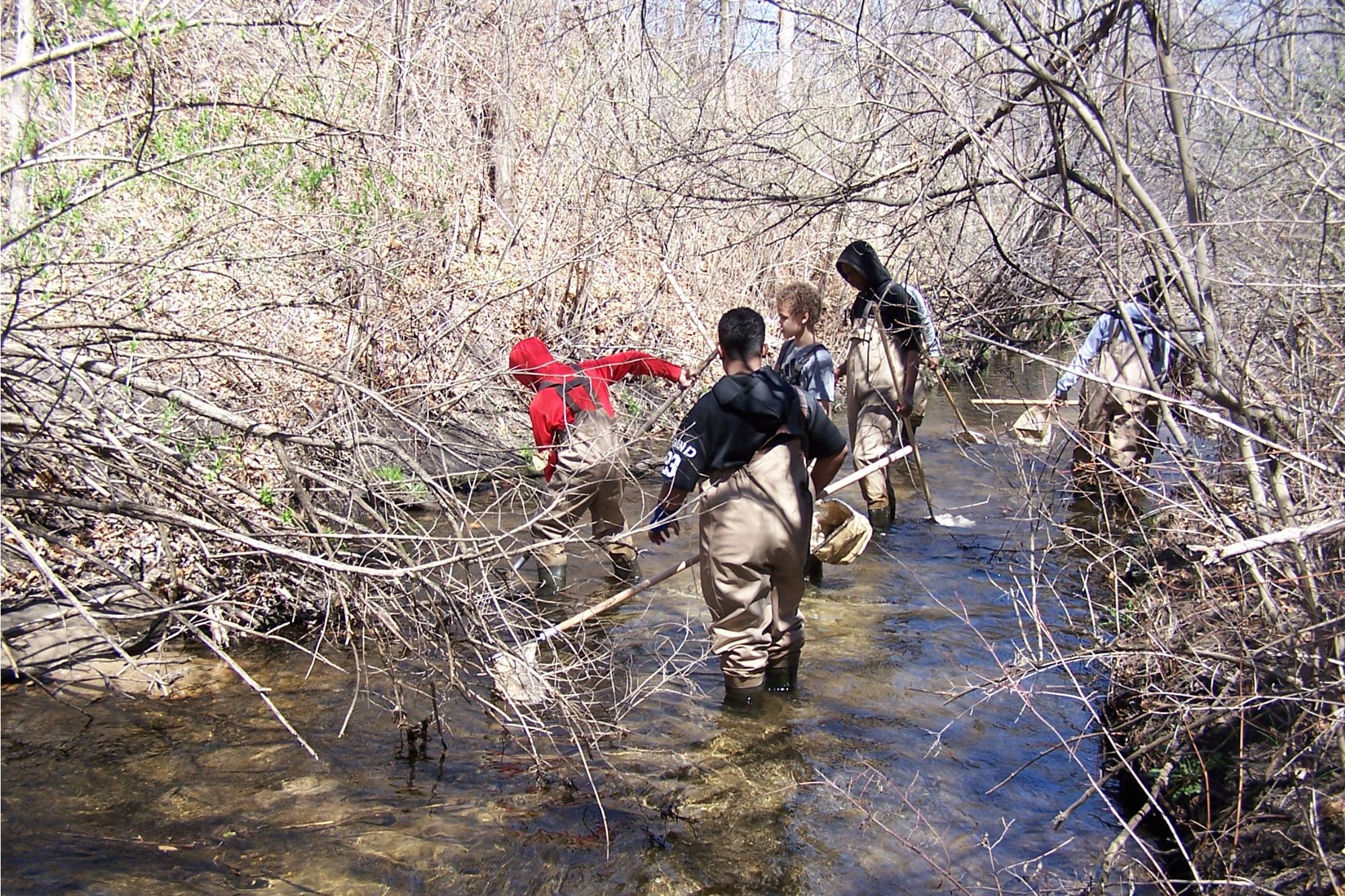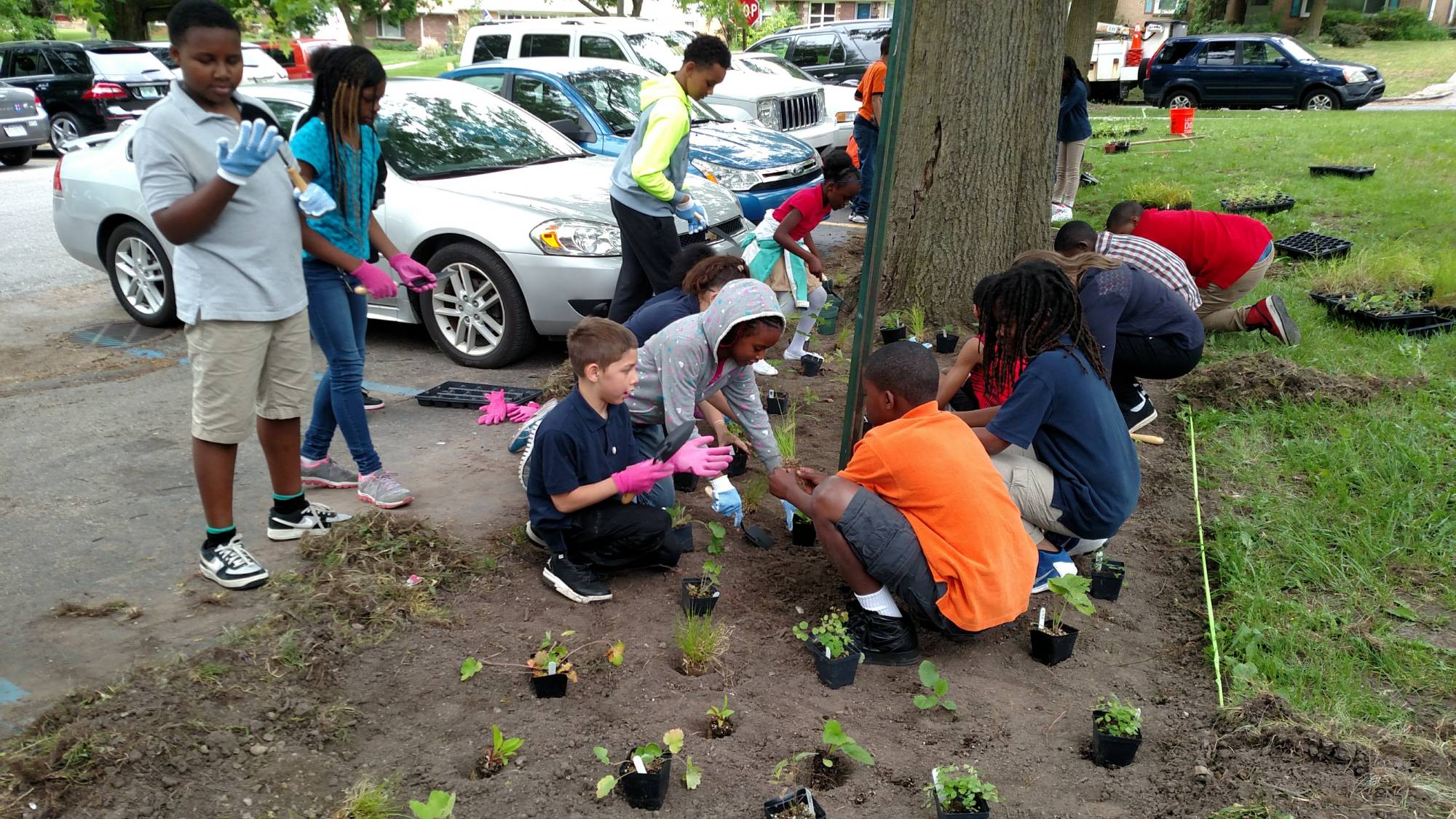Watershed Exploration



The Groundswell Guide
The Groundswell Guide provides students with a path for having a meaningful watershed-based educational experience by helping students create change within their own communities.
Exploring Your Watershed
This set of resources provides materials for a walking exploration of your neighborhood. There is a scavenger hunt to identify evidence and sources of pollution from stormwater runoff and a worksheet to help identify ways to reduce pollution from your own yard. Download each document by clicking on the links below.
- Watershed pollution scavenger hunt
- Yard assessment worksheet
- How clear is your water? - Procedures for measuring the clarity of water in lakes and streams
Exploring the Grand River
This set of resources provides materials for a walking exploration of the Grand River as it flows through downtown Grand Rapids. These activities could be adapted for other river basins. Download each document by clicking on the links below.
Testing Water Quality
These resources will guide students as they evaluate the quality of the water in a local stream, pond, or lake. The GLOBE Program is a great resource for water quality testing protocols for students. Teachers attending the Groundswell Summer Institute 2016 received training in GLOBE testing procedures. Once trained, you can enter student data into a global database. Students can use this database to analyze their data and compare water quality in their communities with other locations worldwide.
We also are grateful to have Trout Unlimited as a Groundswell partner to assist schools with Leaf Pack Network activities. The leaf packs capture macroinvertebrates (aquatic insects) to provide an estimate of stream health. Students identify and count the macroinvertebrates and enter the information into an online database. This database also provides tools for data analysis.
Designing Green Infrastructure
Traditionally, cities rely on “gray infrastructure” to manage runoff. Gray infrastructure includes storm drains and underground pipes that carry stormwater to local creeks, rivers, and lakes. The goal was to remove stormwater from the city as quickly as possible to prevent flooding. However, this approach can reduce water quality by adding pollutants, damaging habitats, and disrupting ecosystems.
Green infrastructure is a more natural approach for managing stormwater runoff. Examples of green infrastructure include rain gardens, rain barrels, permeable pavement, bioswales, and more. Selecting the right type of GI project depends on the specific site characteristics (size, soil, etc.) and the type of problem you are trying to solve.
We were thankful to have an engineer from the Grand Rapids Environmental Services Department present at the Groundswell Summer Institute 2016. He shared information about different types of green infrastructure projects, how to select and design different projects, and how to estimate the environmental benefits. Below are the resources from that presentation.
- Grand Rapids Environmental Services Department presentation slides with calculation equations
- Green infrastructure sizing handout
- Green infrastructure pollutant removal handout
This information was applied to a design challenge activity. Teachers created proposals for incorporating green infrastructure at Richmond Hills Park.
